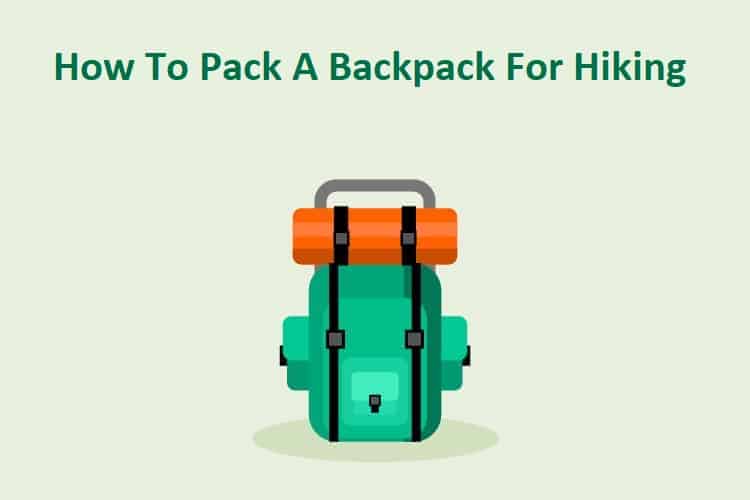Are you looking for a fun way to stay fit and healthy? Hiking and walking are both great options, but which one is better?
While they may seem similar, there are key differences between hiking vs walking that can affect your fitness goals.
Whether you’re looking to explore nature or just get some exercise, this blog will help you decide which activity is right for you.
Difference Between Hiking and Walking

While both are great ways to stay active and improve your health, they have some key differences.
Hiking involves trekking on uneven terrain with a backpack and proper footwear whereas walking can be done on flat surfaces in urban environments or countryside areas.
Hiking helps you burn more calories compared to walking, especially if you’re going uphill or covering long distances. In addition, hikers must carry water bottles, snacks, sunscreen, and a first aid kit as there is a risk of heart disease associated with altitude sickness.
Calories
While comparing hiking vs walking for fitness, one of the most significant differences is the number of calories burned.
Hiking on uneven terrain with uphill climbs burns more calories than walking on a flat surface. However, both forms of exercise offer cardiovascular benefits and can help in managing weight.
It’s essential to decide whether you prefer the challenge of hiking on uneven terrain or the convenience of walking on a flat surface based on your fitness goals and available resources.
Distance
Hiking typically involves trekking on uneven terrain, uphill or downhill, while walking is usually done on flat surfaces.
Hiking covers longer distances than walking and can be more physically demanding.
It also targets different muscle groups and burns more calories compared to a walk thanks to its elevation change.
Elevation

Elevation plays a crucial role in distinguishing between the two.
Hiking involves trekking on uneven terrain with varying levels of elevation change, while walkers usually stroll through flat surfaces like pavement or treadmills.
Combining both of these forms of exercise in your routine can give you a complete full-body workout.
Terrain
While hiking usually involves trekking over hilly or mountainous terrain with backpacks and proper footwear, walking can be enjoyed in flat urban environments with just a pair of comfortable walking shoes.
Hiking does require more physical exertion than walking, helping to burn more calories in a shorter duration of time.
Gear
For hiking purposes, you require sturdy footwear with good traction that can protect you from ankle twists or slips on uneven trails and changing inclines.
Apart from that, a well-fitted backpack is crucial to carry all the essentials such as water bottles and snacks necessary for long-duration hikes. Trekking poles come in handy while traversing through steep terrain to maintain balance and reduce pressure on knees.
On the other hand, walking typically requires comfortable footwear like walking shoes or sneakers that have proper cushioning and grip. You don’t need any fancy equipment other than weather-appropriate clothes while strolling in your local park or countryside.
Health Benefits

Engaging in outdoor activities like hiking or walking can do wonders for your health!
Hiking strengthens bones by being a weight-bearing exercise; whereas walking is a low-impact exercise that’s easier on the joints.
Both activities come with remarkable benefits such as burning calories (depending on factors such as incline), reducing the risk of heart disease and high cholesterol levels, aiding in weight loss goals, or increasing stamina!
Benefits of Hiking
Hiking is undoubtedly a better form of exercise than walking. It’s not just about covering more distance; hiking offers an intense full-body workout that strengthens muscles and improves cardiovascular health.
The elevation changes during hiking can help burn more calories as compared to walking on flat surfaces. Wearing proper hiking boots with good traction is essential to avoid any falls or injuries.
The scenic beauty during trekking is an added bonus that makes the workout enjoyable.
Benefits of Walking
Walking, a form of low-impact exercise, has many benefits. It helps improve cardiovascular health by lowering blood pressure, reducing the risk of chronic diseases, and burning calories.
Walking is easily accessible and can be done almost anywhere, from local parks to national parks. Walking regularly can improve mental health by reducing stress and anxiety while boosting mood.
Proper footwear like walking shoes should be worn to avoid any foot injury or discomfort during long walks.
Ideal Places for Walking and Hiking

For those looking to engage in physical activity outdoors while enjoying the fresh air and scenic surroundings, there are plenty of options to choose from.
Park
Parks are an ideal place if you are confused about whether to choose hiking vs walking.
Walking on flat surfaces suits beginners or people with joint pain whereas hiking provides uphill challenges which burn more calories.
Hiking in a park that has trails of varying difficulty levels can help you increase your stamina as well as provide you with the best scenic views.
Additionally, parks offer opportunities to enjoy nature and fresh air while getting exercise. So next time when you head out for trekking or walking in the countryside or urban environment, make sure you choose the national park nearby.
Woods

Looking to get fit while also enjoying nature? Walking in the woods is a great way to do just that!
The peaceful surroundings can help you relax and de-stress while also providing an opportunity to improve your physical fitness. The uneven terrain and inclines make it perfect for anyone looking for a challenge with increased heart rate and endurance.
Connecting with nature has never been easier!
Beach
The sand’s uneven terrain provides a unique challenge for your muscles and improves balance.
Walking on the beach also allows you to enjoy the fresh air and the calming sound of waves.
For those looking for a more challenging workout, hiking on the beach trails offers both cardio exercise and stunning views of the ocean.
Mountain
The uneven terrain of mountain trails challenges hikers or walkers to engage their stabilizing muscles for better balance and coordination while building leg strength.
Besides being a great workout that improves cardiovascular health while reducing stress levels and boosting mental well-being with fresh air.
Which is Better for Beginners: Hiking or Walking?

For beginners, walking is a good option to start with as it is less strenuous compared to hiking, which requires more preparation and endurance.
Start with shorter walks and gradually increase the distance and intensity. It’s always best to consult with a healthcare professional before starting any exercise routine.
Tips for Hiking as a Beginner
Beginning any form of exercise can be daunting, but don’t let that discourage you.
If you’re new to hiking, start slow with low-impact activities like walking to build up your stamina before hitting the trails.
When hiking uphill or on uneven terrain, take shorter strides and use trekking poles for balance.
Make sure to wear proper footwear such as lightweight and durable hiking boots or walking shoes and bring along a daypack with essentials like water bottles, snacks, sunscreen, and a first aid kit.
Before embarking on any hike, check the duration of the trek and elevation change to avoid overexertion.
Tips for Walking as a Beginner
For beginners looking to start an exercise routine, walking is a great option. It’s low-impact and easy to do anywhere in both urban environments like local parks or countryside areas like national parks.
Choosing proper footwear such as walking shoes with good support can help prevent injury while on uneven terrain or hilly routes.
Gradual increases in distance or elevation change can improve stamina and provide a full-body workout while burning calories.
Don’t forget to bring a water bottle for hydration and some healthy snacks for energy on long walks.
Conclusion
In conclusion, the answer to whether hiking or walking is better for fitness depends on your personal preferences and fitness goals.
Both activities have their benefits and can help you stay fit, active, and healthy. If you are a beginner, it’s essential to start slowly and build up gradually. Remember to wear the right gear, stay hydrated, and choose terrain that suits your fitness level.
Whether you choose hiking or walking or both, make sure you enjoy the experience and have fun.
References:






